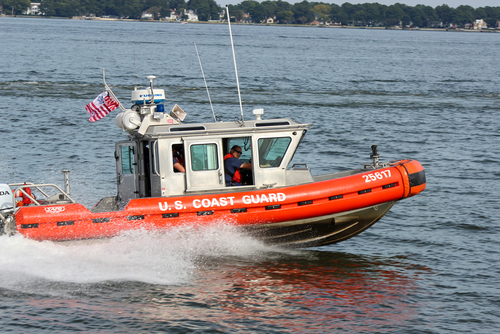The beautiful season is coming back and with it, the desire to sail. After having wintered the boat to protect it from the bad weather, it is now essential to prepare it for the new season. Here are the 6 essential steps to follow for a successful season.
1. Check the sensitive points
Every spring, it is usual to clean your boat carefully to make sure that it is in good condition. In order to prepare your boat for the season, it is necessary to check for potentially damaged parts, namely :
- Make sure that the gel-coat has not received any impact. Its usefulness is two-fold, as it ensures that the boat is aesthetically pleasing and watertight,
- No traces of delamination on the varangues due to ageing,
- No oil in the engine hold (leaks) or heavy corrosion.
2. Check the tightness of the fittings

With this winter’s heavy rainfall combined with the cold weather, your boat’s deck fittings may have watertightness concerns. Therefore, you should carefully inspect deck panels, balconies, stanchions, etc. It is important that no water has leaked anywhere and that the equipment is not rusty.
In the event of a water ingress on deck, remove the deck fittings, clean, degrease, then reassemble with suitable “Sika Marine” mastic sealant (ref. 291, 292).
3. Make sure the batteries are in good working condition
If your batteries have not been protected and stored away from this harsh winter, make sure they remain charged. To do this, simply charge your batteries, plug in electrical appliances and check after an hour or two whether or not the charge level has dropped too low.

Do not hesitate to have your batteries tested by a professional. For a motorboat, you can fit a second battery if you are not already equipped: this is an important safety feature.
And while you’re at it, a quick look at the depth sounder, counters or GPS won’t hurt!
4. Check the engine
Before returning your boat to sea, it is best to have it professionally serviced or to overhaul the boat’s engine yourself.
Check for leaks or corrosion. Drain (engine & base), check spark plugs, change oil filter, decanter filter and seawater filter. Also check the condition of the turbine. Don’t forget to check the thermostat, and check your fuel tank for bacteria (sludge).
Respect the maintenance schedule of the engine manufacturer (distribution, base gaskets, bellows, elbows & manifolds, etc). Once all these elements have been checked, it is advisable to :
- Run the engine with fresh water, possibly with the addition of “Stop Salt”,
- Lubricate moving parts, steering.
If, on the other hand, the engine does not work when everything seems to be operational, we advise you to call in a professional.
5. Register your boat
Re-rig your boat and take the opportunity to check that the fittings are in good condition. Make sure that the boat is facing into the wind. Take up the mainsail, genoa, spinnaker, storm jib and staysail, then check the battens and their sheaths.
Check the condition of the clew and tack. Also check the mainsail luff tape. Check the fittings (shackles, cleats, winches) as well as the steering system (rudder, wheel steering, tiller).

Check the condition of the mast foot, boom and the condition of the tips. Finally, check the mooring lines (chain length, anchor buoy, condition of anchor and windlass).
6. Check the safety equipment
To take to the sea, it is mandatory to have complete safety equipment in perfect condition. Do a small test of the boat during 1 or 2 hours near the port to prepare your boat for the season! You are now ready to set sail. Good wind !



